Magical small-town Italy’s Assisi
From a distance Assisi looked a mighty fortress atop that hill. To me the intriguing antithesis was to think that within those imposing walls once lived two people whose very rejection of might and grandeur was the most defining feature of their celebrated lives.
Assisi can probably not be considered part of small-town Italy, or at least my idea of it. Its multi-layered history going back well over 2 000 years and its popularity as a tourist attraction counter the description. But for me it was the humility of its two most eminent inhabitants, Saint Francis and Saint Clare, that made it somehow fit the down-to-earth charms of the Italy I got to experience outside its famous cities.
However much I looked forward to going there, first I wanted to explore the area’s less heralded sites. So it was with an eye that constantly wandered to that high-walled town on the hilltop that my wife and I set about visiting its vassal attractions, the main one being sprawling Lake Trasimeno.
On our drive there from the north, we got heavily waylaid by the city of Arezzo where bits of broken walls told of the Etruscans who lived their lives in that beautiful Tuscany landscape before the arrival of the Romans in 311 BC.
Wave after wave of Italy’s subsequent tumultuous history of civil wars, foreign invasions and its protracted conflict between the Papacy and the Holy Roman Empire are inscribed in its monuments and sculptures and art and church and palace and other buildings around its medieval Piazza Grande.
In a quiet garden, somewhat apart from those stacks of history, we took a breather in front of an attractive monument of human figures and a wolf watched over by Francesco Petrarch, feted as an early humanist who led the Renaissance by acknowledging people’s ability to decide for themselves rather than be slaves of dogma, and who is remembered as well for the moving sonnets he wrote about his burning love for a girl named Laura who died early.
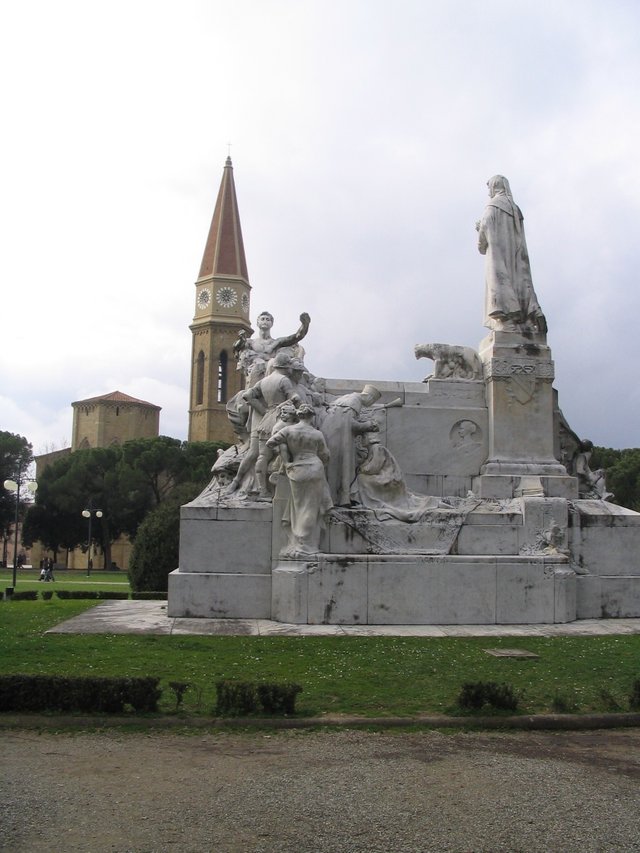
The monument to Francesco Petrarch in Arezzo.
Because of our long visit to Arezzo we arrived late at the Trasimeno lakeside. It caused us to have to negotiate our way in the dark along a twisting uphill road to the Locanda del Galuzzo, our agriturismo, which is the smart name the Italians invented to bring rural and small-town hostelries into their tourism mainstream.
After dinner we were surprised to along with the bill for the meal be presented with one for payment in advance for our three-night stay. This was because the place was that same night shutting down, we were told. Whether this was for seasonal reasons, and for how long, we could not quite make out. But there we found ourselves with the entire establishment all to ourselves for the rest of our stay. It seemed somehow to be in character with the endearing quirks of small-town Italy.
Early the next morning I walked through a forest to the nearby hamlet of Castel Rigone. It was a Sunday morning and the only activity was a small coffee shop that was in the process of opening. The church spire was shrouded in mist, and from it sounded muffled chimes calling the townsfolk to service. This, it struck me, was the way it had been for many generations.
The next day took us on a boat ride to Maggiore Island in Lake Trasimeno. I could not help reflecting as I peered across the vast lake that its placid waters were said to have been painted red with blood 2 233 years ago when Hannibal’s Carthaginian army dealt the Romans an epic defeat on its shore.
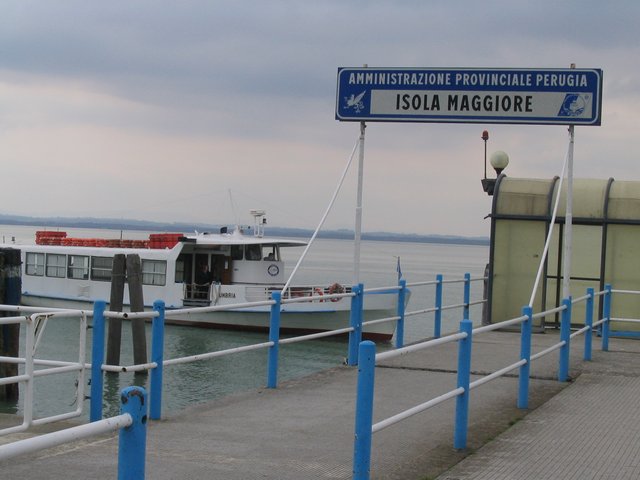
Lake Trasimeno's boat dock.
How incredibly deeply were the ages, conflict and creativity engraved in the Italian landscape.
In contrast with the battle site, Isola Maggiore was an island of tranquility. We inspected its few old buildings and watched members of its tiny population prepare their boats for fishing.
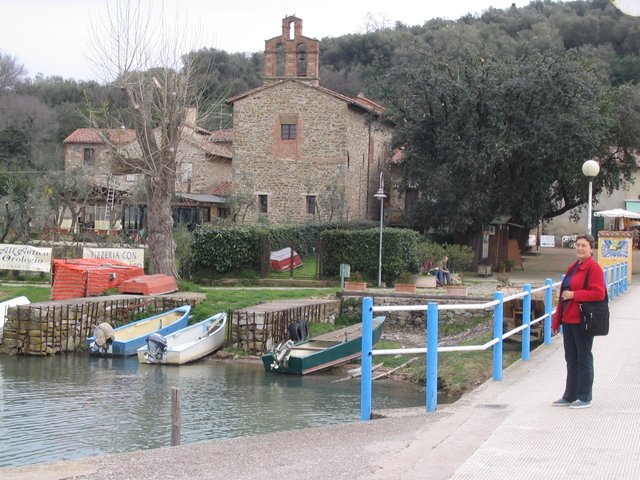
Isola Maggiore's jetty.
It being a nature reserve, we most enjoyed watching the birds on our wanderings through its olive groves, of which some trees are hundreds of years old. I could see why St. Francis chose to spend time there as a hermit.
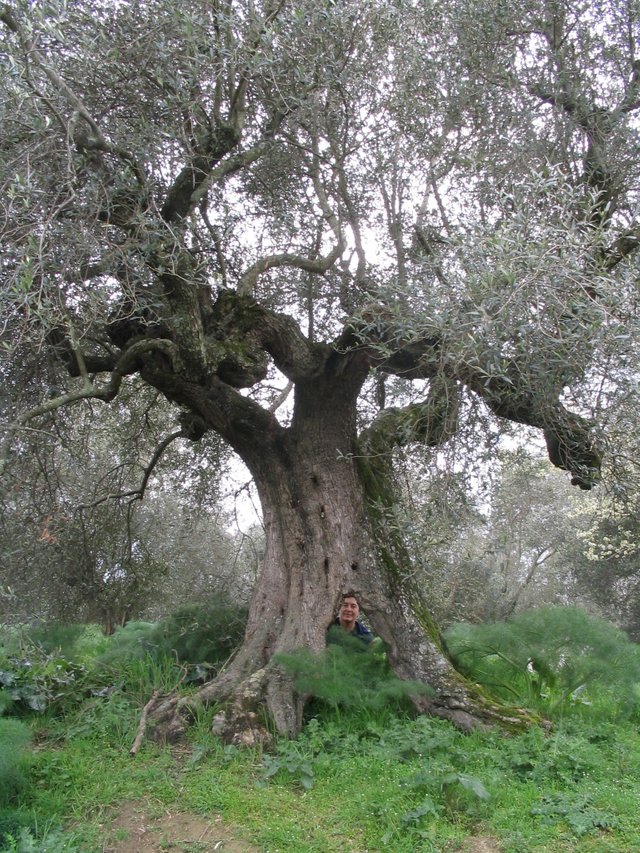
One of the age-old olive trees on Isola Maggiore.
Then finally on to Assisi.
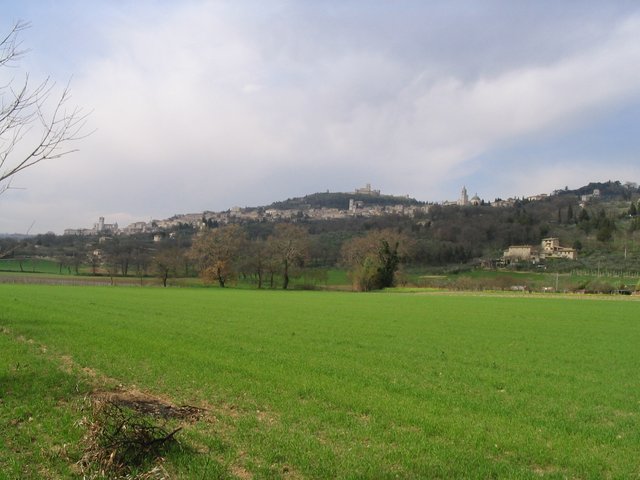
Across a green field beckons Assisi.
First the Umbrians came to the region 3 000 years ago. Then the Etruscans about 500 years later. Then, inevitably, the Romans in 295 BC. About 800 years later their works were in turn smashed by the Ostrogoths.Then the Germanic Lombards took over. What, I wondered, if one could stand still and hear those walls and the ruins beneath them whisper their stories?
The tourist throng moved slowly along the richly decorated high walls of the Basilica di San Francesca. I was aware that somewhere below the paved passage was the house where St Francis was born in 1182 as Giovanni di Pietro di Bernardone. It was at the crypt inside the Basilica where his remains were re-interned after his early death in 1226 that the crowds lingered longest.
What caught my attention as well was a painting showing him in altercation with his wealthy father over his decision to shun his riches in favour of a life of self-deprivation and simplicity. However noble the young man’s conviction, it served also to put me in deep contemplation about the vicissitudes of parenthood.
Another picture I found fascinating showed him preaching to birds. When in 2013 Cardinal Jorge Mario Bergoglio of Argentina chose Francis as his papal name, he said it was because of the saint’s special concern for the poor. But I had since got the impression the new Pope shared his care of nature as well. That endeared both to me.
Following the walkway up to the Basilica of Saint Clare I found myself drifting into deeper contemplation. She too was born in Assisi, in 1194. She too eschewed the riches of her family in favour of the poor. And she too, after her death in 1253, later had her remains re-interred under the basilica’s high altar.
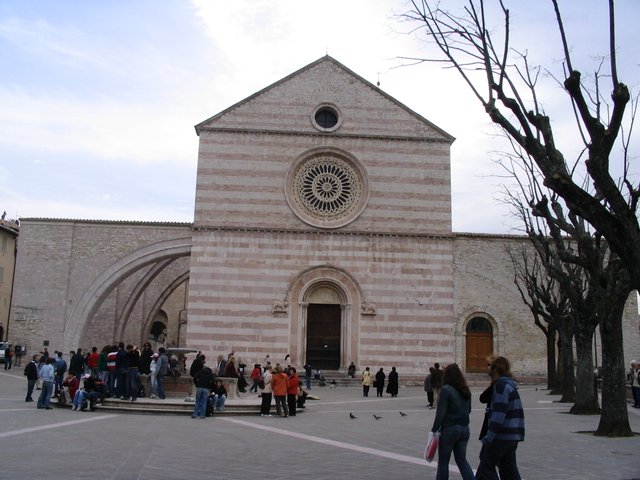
The simple lines of the Saint Clare's Church
Nothing about her church struck me as particularly grandiose. But I noticed that on the whole the people who entered were respectfully quiet. Such I wished to believe was the disarming effect humility tends to have on people.
Would live to be able to visit Italy someday. Nice photo capture.
Up voted and your upvoting my newest content about my love for art , I will feel appreciated.
Thank you. Italy certainly is a country worth visiting. I look forward to seeing your submissions and will upvote.